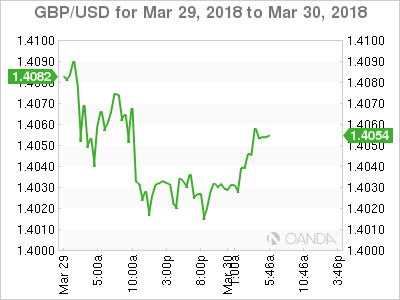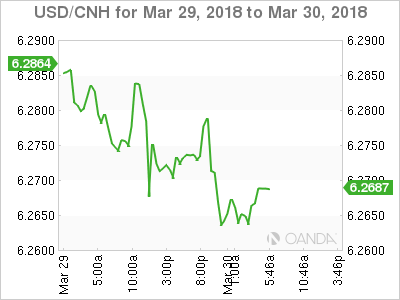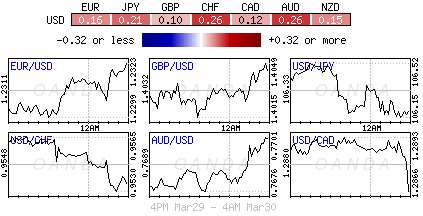Brexit Talks:
A Eurogroup meeting on March 12 has been the key moment for the Brexit negotiations. At this meeting the Europeans set the guidelines for their transition-period discussions with the UK, aiming for a fully crafted withdrawal agreement by October or November.
Nevertheless, both sides continue to talk tough: the European’s chief negotiator has said that a transition is NOT a given if disagreements persist, while the UK Brexit Minister’s refrain continues to be that “no deal is better than a bad deal.” Substantial differences do remain on trade issues such as the arbitration mechanism, and the hard/soft Irish border issue is still not fully resolved.
The length of the Brexit transition period was agreed and set at 21-months, end of 2020, which coincides with the end of a multi-year budget round, simplifying financial matters. Expect the Irish border solution to remain the stumbling block in negotiations.
Since entering office over a year ago, President Trump has railed against “unfair” trade deals, but there was little action beyond lip service. In February, however, the Commerce Department issued its long awaited analysis on industrial metals trade, and the President pounced. Without much apparent consultation with advisors or Congressional leaders, Trump announced tariffs on steel and aluminum that were even higher than the Commerce Department’s minimum recommendations (at +25% and +10% vs. the proposed +24% and +7.7%).
Trump’s decision to impose tariffs on industrial metal imports was a boon for the U.S steel and aluminum industry, but it has already sent a warning to the broader markets on worries about higher basic materials costs and the threat of a trade war.
Many economists who equate tariffs with taxes have panned the plan. Shortly after President leaked his decision on tariffs, senior officials from the E.U, Canada and other trading partners have condemned the plan and assured there will be consequences if the U.S follows through. The E.U indicated that it would impose duties on popular U.S brands such as Levi’s and Harley Davidson as well as on bourbon.
Last week, Trump imposed +$60B of tariffs on China U.S exports. The immediate fallout was felt with the worst global stocks rout since early February – cooler heads seem to be prevailing and giving way to a more optimistic mood this week as the limits of the Trump administration’s willingness to embrace protectionism came into view.
The pessimist is worried that the “too and fro” on new tariffs could be the last nail in the coffin for NAFTA. Negotiations remain tense amid reports that the U.S is making onerous demands that Canada and Mexico seem unwilling to concede to.
But it may be hard to deter Trump as he pursues his vision of revitalizing the U.S steel industry. His initial reaction to the criticism was to tweet “trade wars are good, and easy to win.” Trump may be gambling that corporations will absorb higher costs from their tax cut profits and that trading partners will fear losing access to the world’s biggest market.
Unfortunately it appears that the rest of the world may be ready to call his bluff, and Trump has responded to this by threatening to raise duties on automobiles shipped from Europe.
A worst-case scenario would be a trade war escalating to the point where the Trump administration withdraws from the WTO – unraveling would lead to major disruptions in global trade that could set off a new recession.
President Trump seems bent on finding adversaries to measure himself against. Conflicts with China, N. Korea, Iran and Venezuela all have the potential to disrupt orderly global markets.
So far, China has taken a typically understated tone in response to the U.S tariff threat – the new metals tariffs will not put a dent in the U.S trade deficit with China, which directly supplies less than +3% of U.S steel imports. Maybe violations of intellectual property would have more of an impact? One option in retaliation for China could be to slow down of their purchases of U.S treasuries.
The U.S needs China to stick handle N. Korea. Tangling with China on trade would be counterproductive with the nuclear threat from N. Korea. For now, the S. Korean government is taking the lead, exploring talks with Pyongyang. Annual joint military exercises between the U.S and S. Korea that were postponed as a good faith gesture for the Olympics will resume any day.
The other remaining member of the once so-called “axis of evil” is Iran. In mid-January Trump signed another 90-day waiver on Iran sanctions, but stated that it would be the last time he will extend the waiver. To keep the U.S as a participant in the nuclear accord the White House is demanding that the deal be reopened to make the terms tougher and permanent with no sunset clause.
Having set a countdown clock, President Trump says he will withdraw from the Iran nuclear deal immediately if he believes a revised agreement is not within reach. U.S officials say they are working with European partners on new provisions for the nuclear deal, but there are no signs that any real progress is being made or that any allies want to revisit the nuclear agreement at this time.
Finally, Venezuela, its expected to become a political flashpoint as long-simmering tensions could come to a head around the April 22 presidential election. The political opposition has already said it will not participate in what it considers a “sham” election after President Maduro reorganized the government to ensure he would hold on to power.
The violent protests seen last year may yet flair up again around the election, which could lead to disruptions in Venezuela’s two million barrels-per-day supply of crude oil.
Unnamed U.S officials say the White House is mulling sanctions aimed at pressuring Maduro. This could involve restricting insurance on oil shipments or even a complete U.S embargo on Venezuelan oil – a measure that would cause at least a short-term oil market shock.















